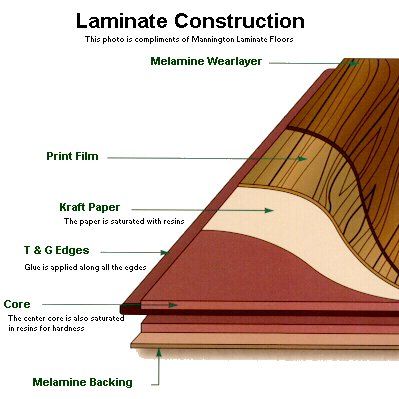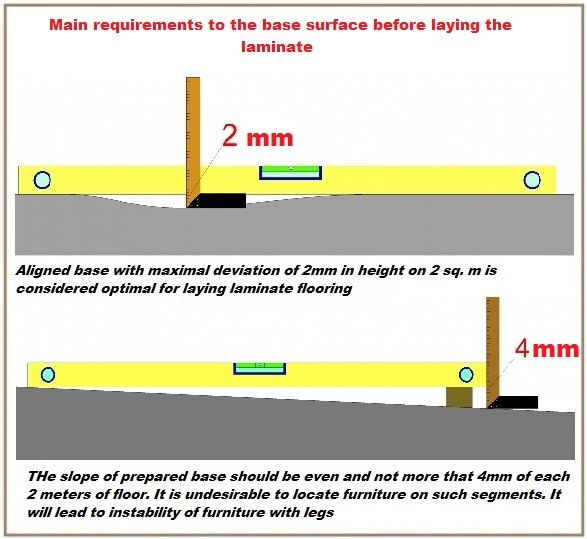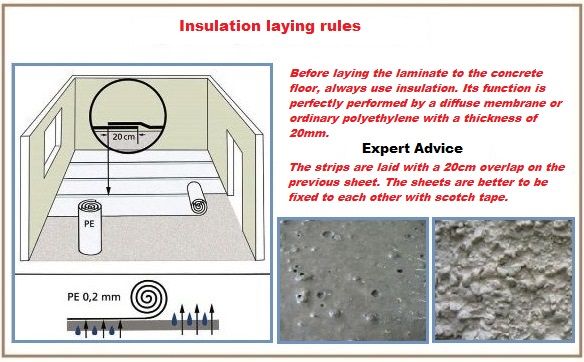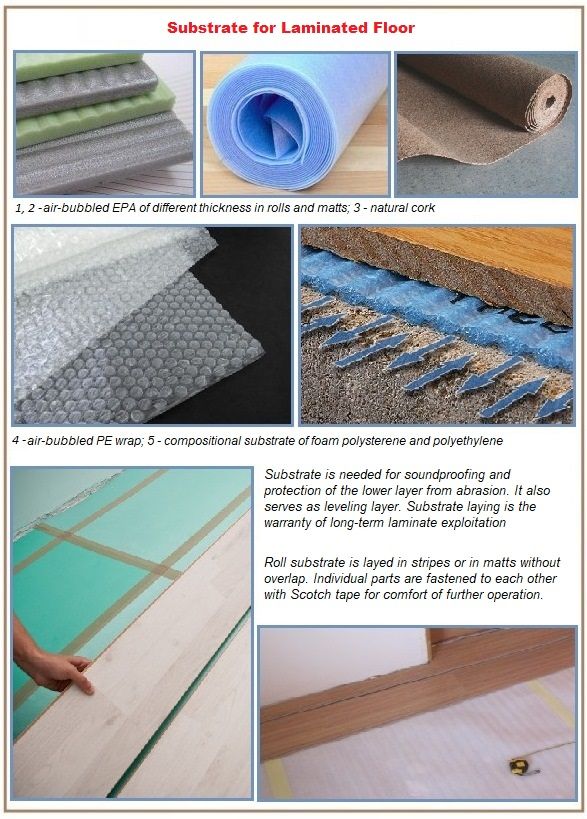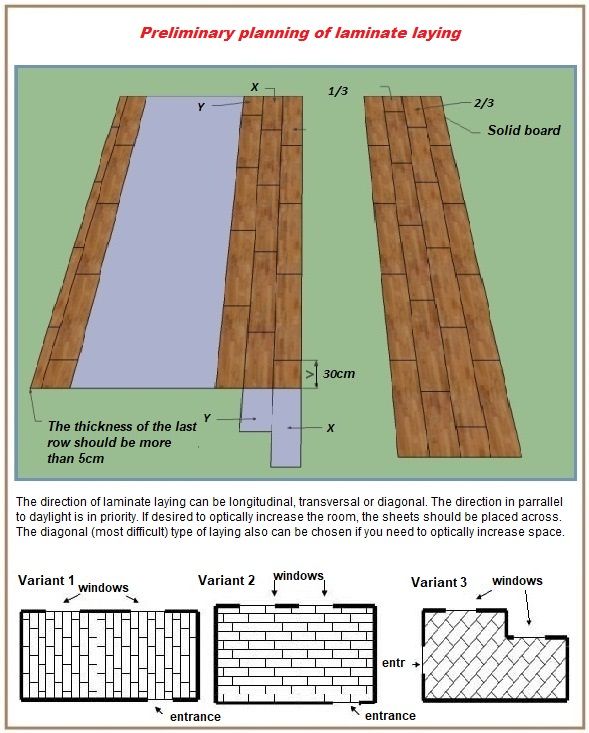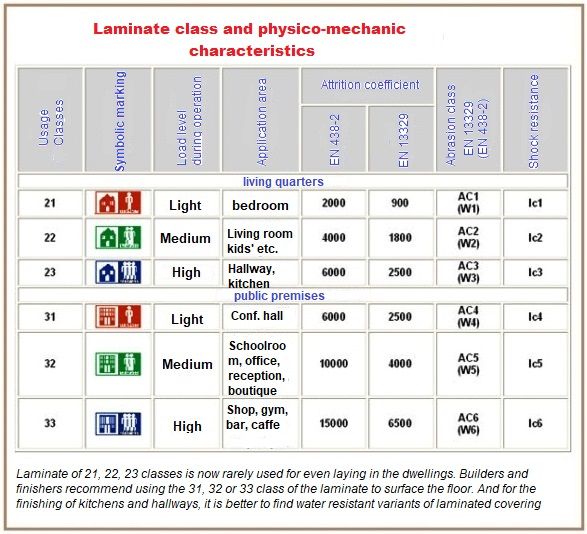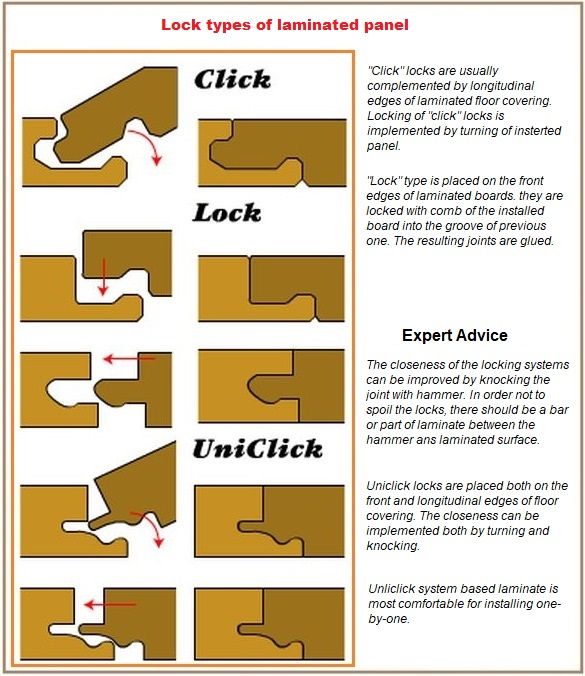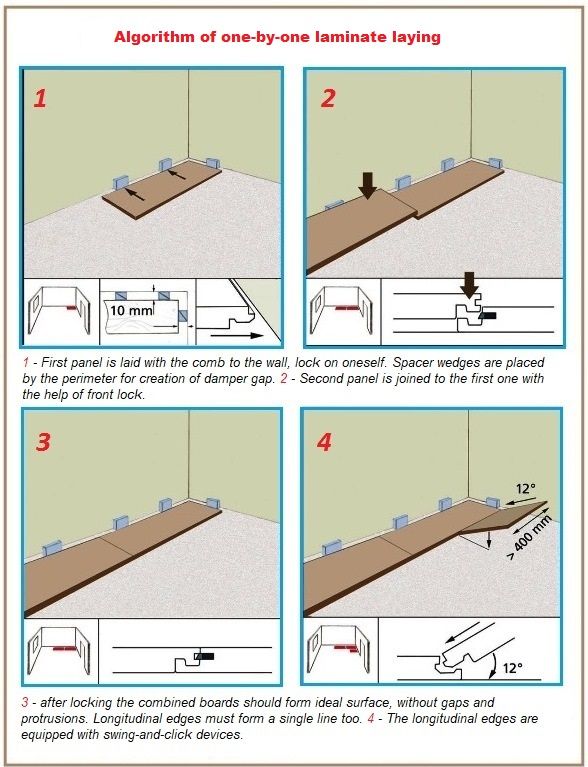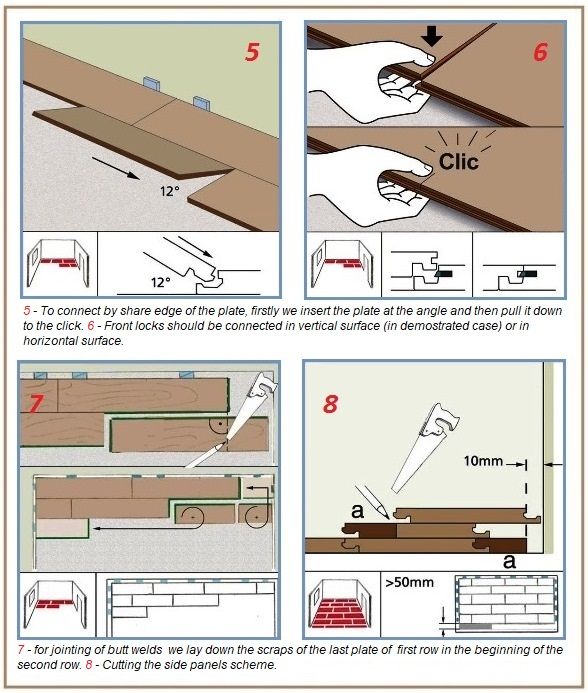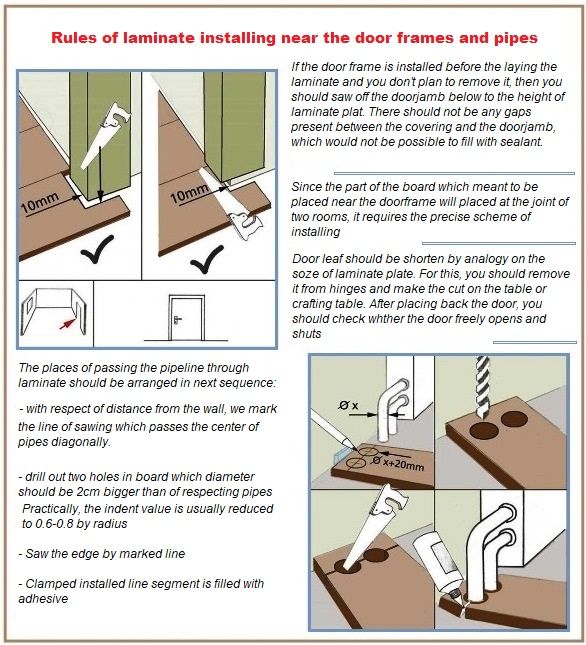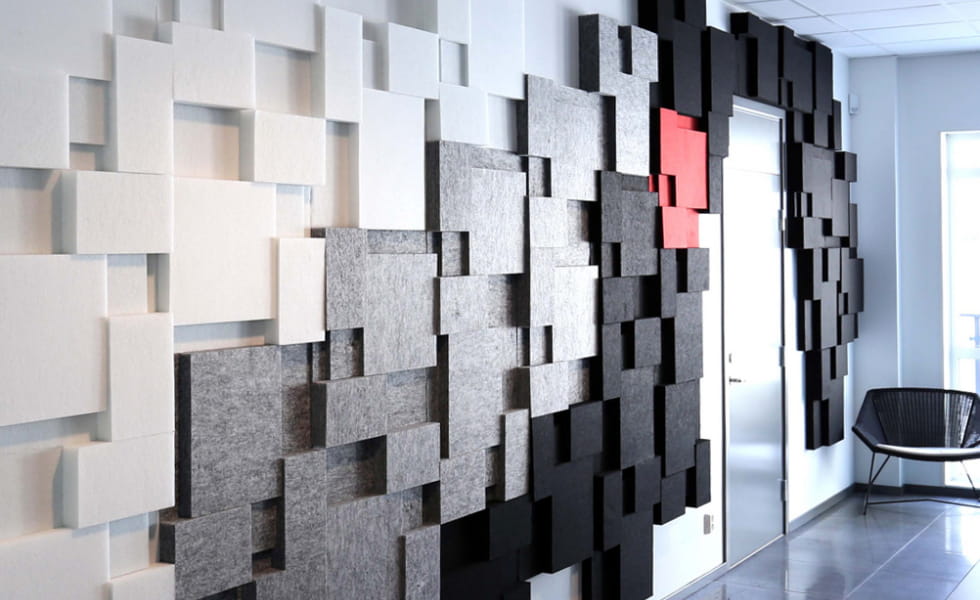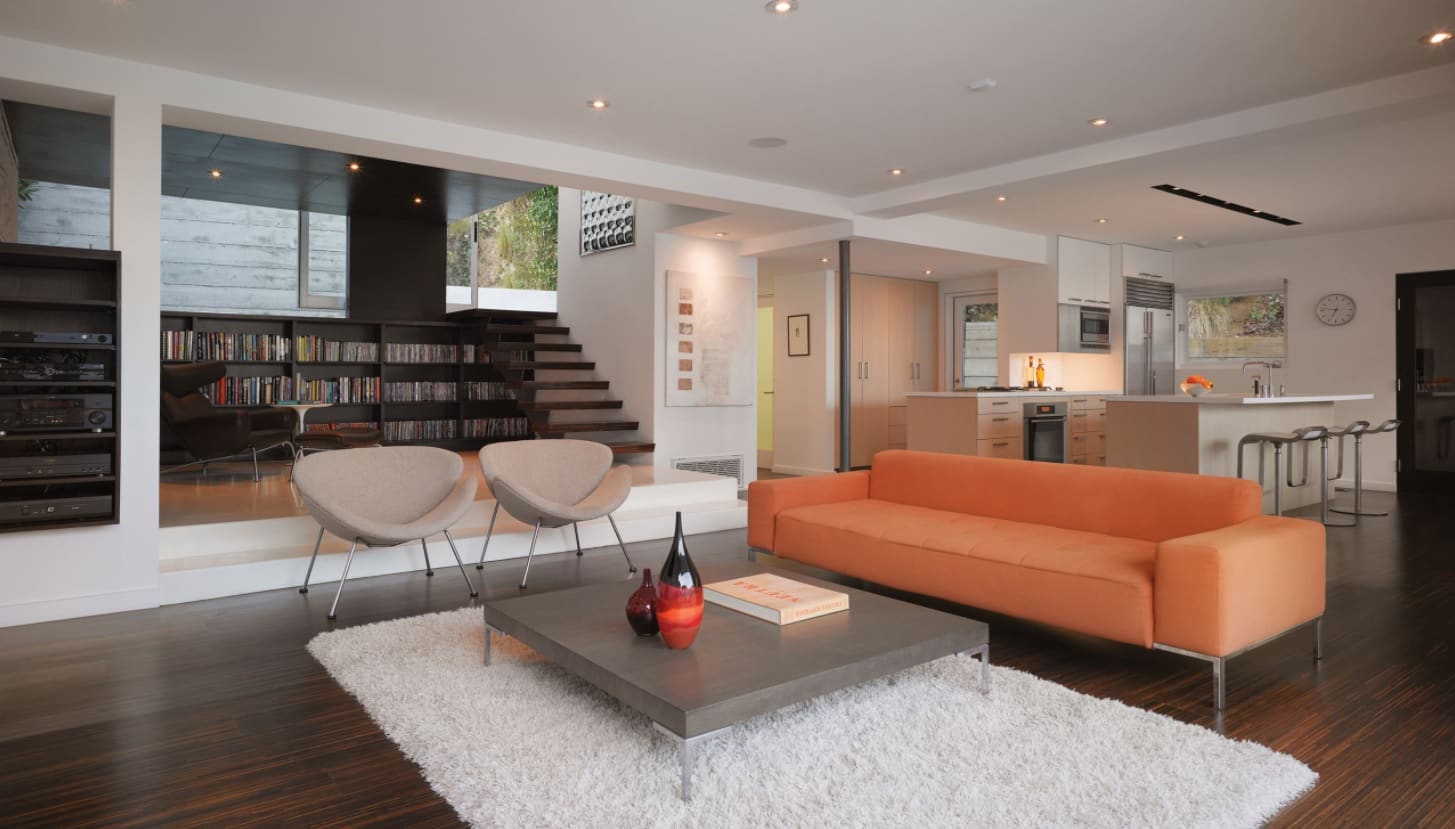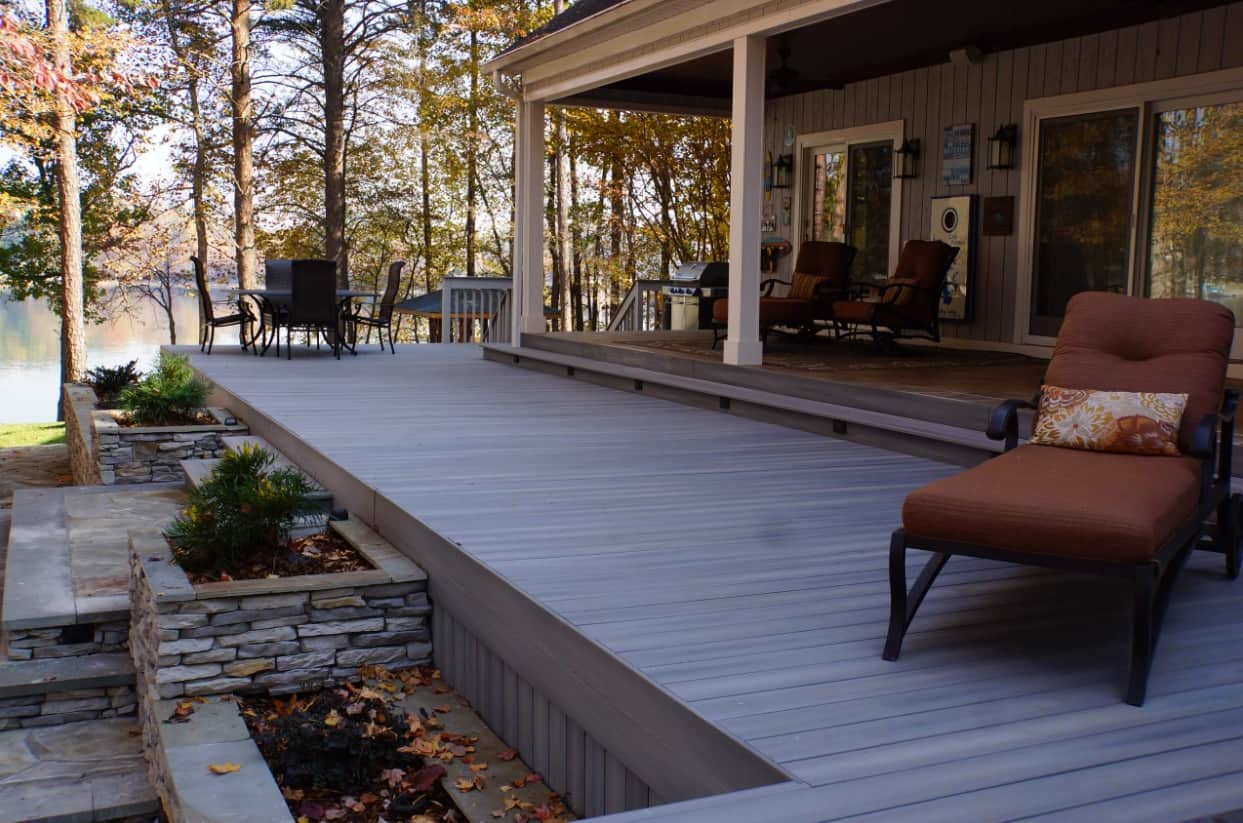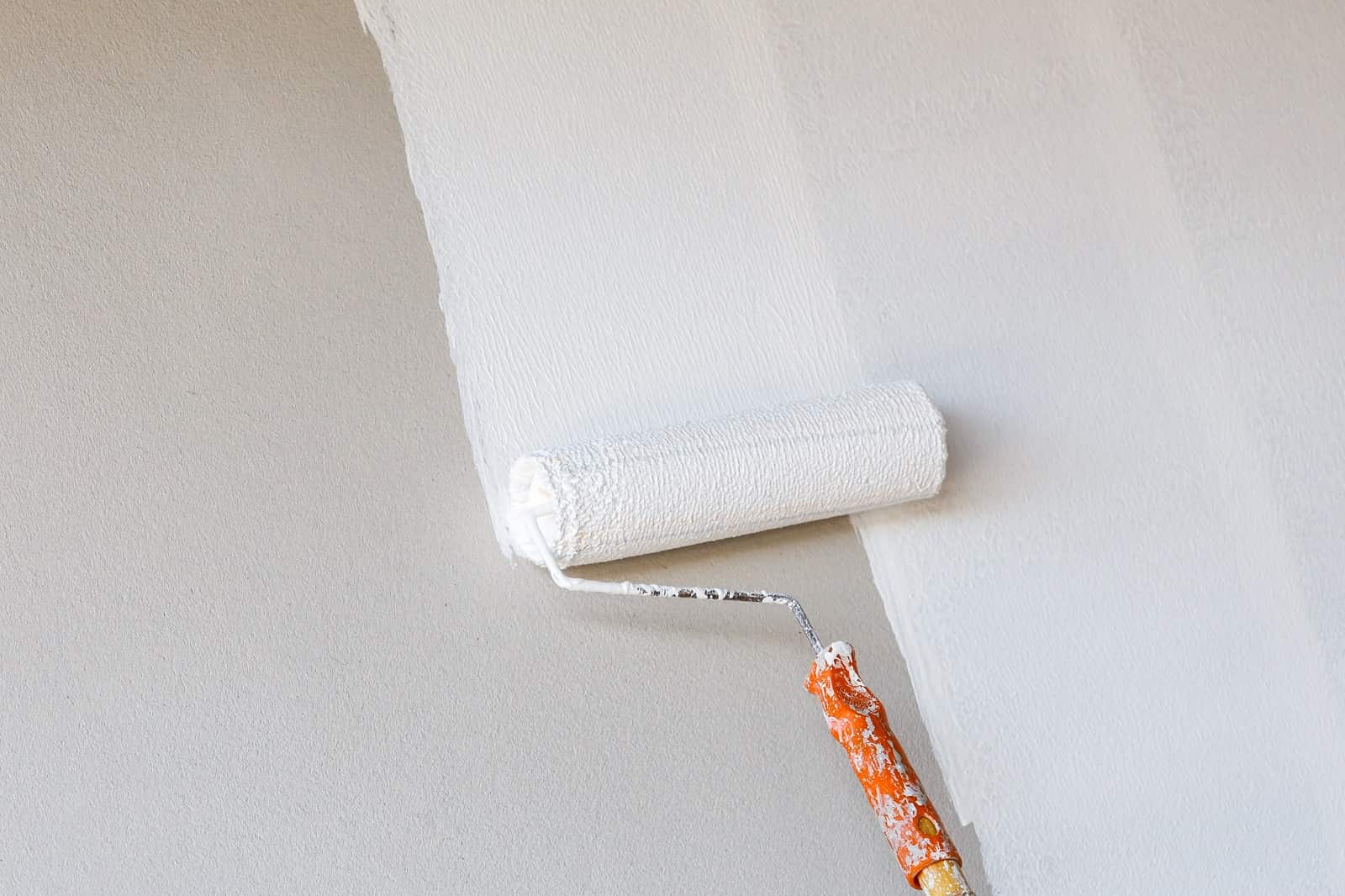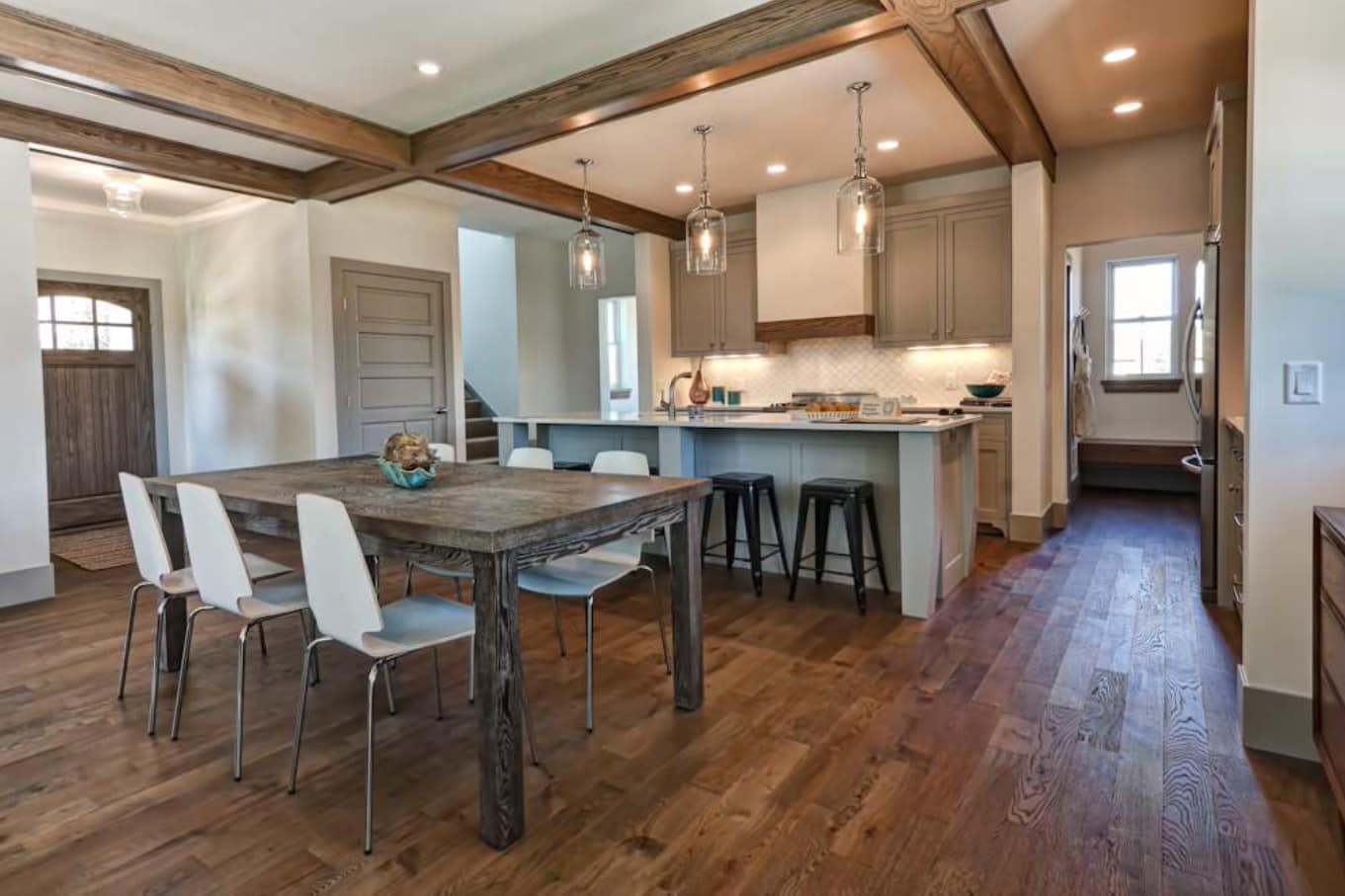Inexpensive and relatively green type of flooring attracts with not only an abundance of colorful and textured options with a precise imitation of the picture of noble wood, stone, and even skin of reptiles. A strong argument for the acquisition of a laminated floor is considered to be technological priorities, thanks to which the owner can arrange his/her property in person. But to make it by your own hand, however, you’ll need some knowledge that can be acquired in our online laying laminate flooring from the start to the end instruction.
Contents:
To implement the idea experience in the field of construction or finishing is not required. It is only necessary to strictly follow the rules, thanks to which DIY laying laminate flooring will be done perfectly, and the material will last longer than the period guaranteed by the manufacturer.
The Decent Basis for Laminated Floors
Requirements to the Base for Laying
Laminate is a set of multi-layer panels, equipped on all four sides with special locking systems. Closer-click devices speed up and simplify operation, but require special care from the installers during the preparation of the room for the arrangement.
In the case of differences in the height of the “relief” of more than 2 mm in a section of the floor with an area of 2 m², the locks can be loosened and even broken during operation. The consequences are rather disappointing: the accumulation of dust and dirt undercover, creak, large and gradually increasing gaps, and similar troubles.
We assume an even slope of the plane of the rough floor within 4mm on 2 sq. m. However, it should be noted that in areas with a slope it is not desirable to arrange furniture.
There will be no stability for furniture items resting on 4 legs, doors in the cabinets, and chests of drawers the will cease to close due to misalignments.
Alignment is a Guarantee of a Long Service
Regardless of the type of rough foundations, it must be leveled in accordance with the building regulations:
- Old concrete floors need to be repaired, expanded, and filled with cement-sand mortar. In the presence of large exfoliated pieces they are removed, the grooves are filled with a self-leveling mixture. After curing, the floor is either ground or poured with a screed.
- Freshly poured cementitious screed is primed, for example, with Ceresit CT 17 or 15, so that the upper weak concrete layer does not “dust”, so that the sand, separated for some reason from the concrete, does not creak under the laminate.
- The old wooden floor is repaired with the replacement of damaged parts. If it is possible to reduce the height of the ceilings, it can be leveled with plywood.
- “Minor” roughnesses are cut off by the grinding machine from the new boardwalk and from the plywood alignment, having previously slammed the fastener caps into the grooves.
The listed types of rough foundations, as well as new linoleum without waves and departed areas, evenly laid tiles, etc., are thoroughly washed and dusted off with a vacuum cleaner before laying laminated panels.
Substrate and Insulation Layer
As in the production of laminated materials using impregnated paper, inexpensive coniferous wood, or slabs created by pressing wood waste, it is highly undesirable to directly contact the moisture-releasing surfaces.
Therefore, home craftsmen who want to arrange laminate flooring with their own hands should know that between the fresh and old concrete floor, which is able to absorb moisture freely and pass it next layers without any extra delays, a vapor barrier layer is required. Its function is perfectly performed by a diffuse membrane or ordinary polyethylene with a thickness of 200mc.
The insulation is only needed for concrete floors. There is no need to lay polyethylene on a wooden base, plywood, particleboard or parquet.
To the category of concrete floors, in spite of technological differences, we classify all the structural elements that have cement in composition:
- cement-sand screeds;
- directly concrete floors, differing from cement-sand screeds by the strength and the presence of gravel or crushed stone in solution;
- monolithic slabs and factory plates with round voids in the body.
The “age” of the concrete foundation does not matter. The new and old concrete floor can absorb and emit water. Isolation will stop the attempts of the water emitted by concrete to penetrate into the sensitive laminate, which means that the moisture will not warp the panels. The strips are laid with a 20cm overlap on the previous sheet. Upon completion of all manipulations with the construction of the laminated coating, polyethylene is closed with a plinth.
According to the manufacturers’ instructions and the technological laying rules, the laminate needs a substrate that performs a number of useful functions, such as:
- sound insulation, absorbing the sound of footsteps;
- protection from abrasion of the underside in contact with the roughing base;
- ensuring the relative steadiness of the floating floor;
- leveling of minor base defects;
- protection from moisture, which can be isolated and wooden floors.
If the laminated panels are laid on top of the impeccably laid linoleum, then the important role of the substrate can be successfully fulfilled by it.
If there is no previously carefully carpeted linoleum on the floor, then instead of it you can use sheet or roll EPА (Extruded Polystyrene Foam), air-bubble wrap with a thickness of 3 mm, and a number of specialized composite materials. You can have a cork, but builders consider it a costly excess for a budget laminate.
The thickness of the substrate is determined by respecting the size of the panels. Since the arrangement of housing is strongly recommended to buy a laminate with a minimum thickness of 9 mm, then it is advised to put 3 mm material under it.
Under the “thicker” brands, it will take 4 or 5 mm. In the manufacturer’s instructions attached to the packages with panels, there are necessarily recommendations for the selection of this floor element. You should be guided by them.
Laminated floors are mounted on floating schemes, that is, they are not attached to the roughing base and to the walls, but are only interconnected. The interlayers located under the panels also do not attach themselves to anything, but lie freely in the form of functional carpets, pressed together by the weight of the floor.
Specificity and Order of Laminate Flooring
Selecting the Layout and Making Calculations
In order to evenly distribute the load and optimize the reliability of the connections, the laminated billets are displaced in each successive row, relative to the panels of the previous row. Cross-shaped joints in the assembled coating should not be present.
If to look in the plan, the picture of the correct laying of the laminate should resemble brickwork with a butt weld strictly above the center of the panels of the previous and the next row. The professionals do that. The home masters, unlike them, shift the butt seam to the length of the piece left after the last billet was laid in the previous row. It is reasonable and economical, but not too beautiful and less durable.
However, this method has become very popular among the people, although it can reduce the consumption only by 2-3 laminated elements. For the most part, home-based masters are doing this in the same way. Also, manufacturers do not advise to invent a bicycle too. The main thing is not to forget about clear rules according to which:
- The length of the trimmed parallel to the end line of the bar can not be shorter than 30 cm.
- The minimum width of the trimmed panel should not be equal to or less than 5 cm.
- The joint seams in the rows are displaced by about 1/3 of the length of the laminated element.
- In the case of laying the laminate on the board floor, the panels have “cross” floorboards.
In order to comply with these rules, it is reasonable to draw a small and simple plan by hand with the size of the room being arranged. It is advisable to apply all architectural details, ledges, stoves, openings, etc., to it immediately.
We will take into account that it is necessary to leave 1 cm on the damper indentation at the perimeter of the room to be cleaned and then estimate how many panels fit in one row, and how many cms should be filled with pruning.
Remaining from the first trimmed strap we will postpone to the next row and by analogy fill all the space drawn on paper. The longitudinal ridge of the first row is flush-edged before laying. This should be taken into account in the calculations.
Preparation of the Tool and Preliminary Planning
Let’s assume that we will lay down according to the simplest economical scheme using the length of the last panel as the starting element of the next row. Longitudinal seams will be placed along the stream of natural light coming through the window aperture. So the seams are less noticeable. We begin the laying from the far corner of the left side.
A few tricks pre-planning:
- It’s hard to imagine that the first row will be formed only from the whole panels, but since so lucky, then from the left end of the first plate of the second row you need to saw off a piece which length is equal to the amount of displacement. That is ½ or 1/3 of the length of the solid panel, depending on the preferred way of laying the laminate elements.
- If, as a result of the distribution of solid rows, the width of the last of them is less than or equal to 5 cm, then from the panels of the first row it will be necessary to saw off not only the comb. Calculate so that the two side rows in the laminated floor will be approximately equal in width.
- If the room has interesting architectural elements that attract attention, such as a large fireplace, or a balcony above the bay window, we will begin to distribute the rows of the laminated floor from their central axis.
Cutting a laminate is necessary in any case. For a practical and aesthetic cutting, you need to stock up with an electric jigsaw, a miter saw would be even better. Don’t use a hacksaw, it will damage the outer decorative layer. To obtain a beautiful cut line when sawing with a hand-operated jigsaw, the panel should be pasted with adhesive tape.
Few Steps to Go: Proceed to Laying
Before laying, it is necessary to give the material 2 days to lie in a room intended for decoration. After accustoming multilayer billets to the specified conditions, the owner can safely proceed to the floor covering with an adapted laminate of his own hands or with help of hired laborers.
The method of connecting the elements is indicated on the packaging of the material. The brackets can be fastened with:
- Lock-locks, for snapping which the comb is inserted into the groove of the previous panel strictly horizontally or vertically;
- Double locking click-devices, for joining of which the panel with the crest is installed under the angle indicated by the manufacturer, then by means of applying small forces and moving the element to the horizontal plane is brought to a click.
There is also a glutinous way of joining laminated billets, but it is now extremely rarely used. According to the adhesive technique, the end and sides of the panels are treated with glue before bonding.
Regardless of the type of locking system of the chosen flooring, the lamination process can be done:
- by assembling it in a straight line and then adding finished rows to the gradually growing floor;
- by attaching a separate strip through the longitudinal ridge to the previous row and through the end ridge to the previous lath in the stacked row.
The assembly of the floor from individual billets is preferred if there were no assistants and if the fair length of the fully formed strip does not allow it. However, many independent handlers believe that it is easier and more convenient to collect laminate by rows.
“Knocking” with a hammer on the laminated panels, achieving the density of the connection, is prohibited. Do it only through the bar or through a scrap of the laminate itself.
Have you already determined the most comfortable method? Go forward:
- We cover the whole area of the rough floor with a substrate. Sheets or stripes are laid back and pasted with adhesive tape for the convenience of further work.
- We collect the first row of panels with a previously cut off comb. The trimmed side should be pointed towards the wall, locking the straps to the performer. To form the first row, it is not necessary to be located in proximity to the wall.
- We collect and attach the second strip of laminated panels to the first row.
- Then it is already possible to attach the initial elements of the future floor to the wall and expose spacer wedges or factory spacers along the perimeter. We need these devices to form a deformation indentation. The distance between the wedges is about 25cm; they should ensure clearance of at least 0.8cm. The deformation gap should already be the width of the skirting.
- By analogy, we follow to the finish, until the whole floor is covered with a laminate.
- Under the existing door frame, the cover must be “dragged in” so that there is no gap between the jambs and the floor. To do this, we rasp off both pillars of the box from the bottom for the thickness of the laminate.
- At the points of intersection of the floor, the pipeline will need to make a hole in the board with a diameter larger than the same tube size min by 1 cm using a pen drill or jigsaw. It is generally supposed that the radius should be increased by 1 cm, that is, an equivalent centimeter indentation should be left around the entire pipe. However, practice showed that the centimeter gap is too ugly and large, and even after masking it with the sealant, it significantly spoils the impression. Moreover, it is left to compensate for the heat displacements of the entire floor. At a small area around the pipes, the coverage is not so intensive to “float” naturally.
Scraps of panels under the radiators, near the pipes, and the parts under the box, are connected to the floating floor with the help of glue. To attach the last row or individual panels, a special clamp-clamp is used.
Usually, in packages with a laminate, there is the detailed instruction on its packing. Observe the manufacturer’s recommendations should be strictly followed. However, there are issues that are not covered in the application, or arise before the material is acquired.
It’s great if, thanks to our article, the prudent owner will understand in advance whether he will be able to independently arrange the property, enter the process, then he will go to the store behind the laminate and arrange it himself.

